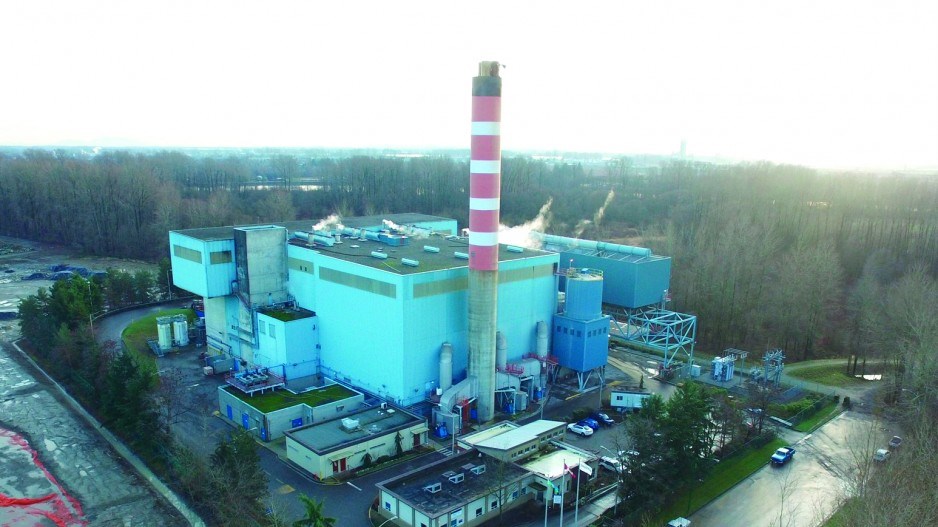In 2013, the Philippine government told Canada to take back its garbage. An Ontario company called Chronic Inc. had sent more than a tonne of plastic waste to the Philippines for recycling, but it turned out to be contaminated with soiled diapers and other municipal garbage.
Six years, $1.2 million and one reputational black eye later, 1,500 tonnes of Canadian trash arrived by container ship in Vancouver at the end of June and is now being vaporized at the Metro Vancouver waste-to-energy incinerator in Burnaby.
It represents a small proportion of the 250,000 tonnes of waste the incinerator burns each year.
Incineration, which produces carbon dioxide (CO2) emissions, may not be the ideal way of dealing with waste, but it may be better than the alternative.
Batteries, plastics and other non-biodegradable trash can sit in a landfill for centuries. It takes batteries about 100 years and plastics hundreds of years to decompose.
Organics decompose quicker and release methane gas, not to mention a toxic soup – leachate – that can contaminate groundwater. Landfills can produce methane and leachate for decades. Incineration, on the other hand, not only disposes of garbage instantly, but also can produce valuable commodities, like electricity and metals, which would otherwise have to be generated through processes that have their own greenhouse gas footprint.
In Metro Vancouver’s case, the Burnaby incinerator has cogeneration, with heat driving steam turbines to produce electricity – enough to power 16,000 homes.
It recovers 6,000 tonnes of metals like steel, iron and copper that would otherwise sit unused indefinitely in a landfill.
The incinerator also produces 42,000 tonnes of ash that can be used as an aggregate.
The preference, of course, would be to eliminate waste altogether. But that could take decades to achieve.
B.C. has already made significant strides in waste diversion. The amount of waste that Metro Vancouver either incinerates or landfills is lower than the national average.
Metro Vancouver has a 63% diversion rate, which shows how much of the waste produced in Metro Vancouver gets recycled.
The national average for waste diversion is 26.5%, said Paul Henderson, general manager of solid waste services for Metro Vancouver. Although B.C. has a fairly robust recycling program, there are still some items that are not recycled: shoes and clothing, for example.
The 27% of waste not recycled – about 920,000 tonnes per year – is either landfilled or incinerated.
About 600,000 tonnes of that goes into a regional landfill in Delta, and 250,000 tonnes is incinerated. About 40,000 to 60,000 tonnes goes to landfills in Washington and Oregon.
Some non-recyclable waste – such as construction waste and non-recyclable plastics – is now being burned, displacing fossil fuels, at the Richmond Lafarge Canada Inc. (TSX:LAF) cement plant.
The Burnaby incinerator produces 120,000 tonnes of CO2 per year. Whether it is better or worse, from a greenhouse gas perspective, to burn waste or put it in a landfill depends on how much organic waste goes into a landfill and how much methane can be captured from it.
“I think, when you look at options around waste management, you have to look at the range of issues related to each,” Henderson said.
“In a landfill you have a combination of things. One is that you have the conversion (methane and CO2 production) over a long period of time, so you have the landfill gas being generated over many years.”
The Ecofiscal Commission estimates that 20% of Canada’s methane emissions come from landfills.
In Metro Vancouver’s case, it has reduced the amount of household organic food waste going to landfills through a curbside collection system. Some of it goes to a composter in Delta, and some goes to a new bioenergy plant in Surrey, where the organics are turned into renewable natural gas.
But getting full diversion for food waste is a difficult task, so some still ends up in landfills, where it can generate methane, as well as CO2, for decades.
Some of the methane is captured for use as renewable natural gas, but there will always be some that isn’t captured and will leak into the atmosphere. The problem with methane – apart from the fact it has a higher global warming potential than CO2 – is that it’s hard to measure.
“You have the landfill gas being generated over many years, compared to a waste-to-energy facility where you have instantaneous generation,” Henderson said. “With landfills it’s more challenging to precisely measure the amount of methane emissions from the facilities.”
See related story: Canada needs to trim is wasteline




